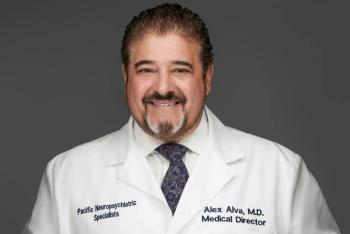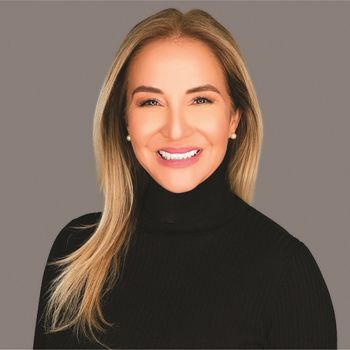
‘What I Didn’t Learn in Residency’
Pediatrician Sandy L. Chung on getting schooled in the business of medicine during her first year of practice.
“Are you new to the practice?” asked a parent with a worried smile on her face , holding her baby protectively as if I was going to make a mistake by just looking at her wrong. “Yes,” I replied, giving my best I-do-know-what-I’m-doing smile. “It’s nice to meet you!”
Now, eleven years into my pediatric career, I distinctly remember the discomfort of being a doctor on my own for the first time. I was suddenly given all authority to examine, diagnose, and treat all ailments that pediatrics deals with.
This was daunting enough and stressful enough. I examined this 18-month-old baby with a cold, trying to determine if I needed to rule out HIV or leukemia for fear of missing a critical diagnosis. Was that diaper rash Candida or necrotizing fasciitis? How would I know? Should I send them for a dermatology consult?
Just when I thought I knew what I was doing, and had decided that it really was just a cold and a candidal diaper rash, I was handed an encounter form to complete on my own for the first time. I had never looked at one of these before. This is what my attendings were completing when I was writing my notes as a resident. They never showed it to me and certainly never had me complete one. I looked over at my associate physician, and he said, “Just circle a visit code and the diagnosis.”
Now I had to figure out which codes to circle on a routing slip. It was hard enough to see the patient, decide on a diagnosis with confidence, and then prescribe the correct dose, signa, and dispensing size for the antifungal cream. The myriad of numbers - alphabet soup of ICD-9 versus CPT versus HCPCS - was a big puzzle. My financial viability depended on doing it right. But I didn’t know that at the time.
It didn’t feel important. This was just paperwork. So I just circled something in the middle: the 99213. It felt like a safe a code to use for the visit. Then I circled a diagnosis for every symptom the child had. I circled fever, cough, congestion, pharyngitis, rash, and constipation. The more codes the better, right? If only I had known about the diagnosis code for acute URI. I had also spent nearly thirty minutes with this mom and counseled at length regarding the rash and constipation, so it also could have been a 99214.
Then I forgot to circle the rapid strep test that was done. And I forgot to sign it.
The next valuable lesson I learned on day one was that I was on a tight schedule. Patients had appointments at a specific time and they could care less that I was just learning how to manage my day. Soon I was an hour behind, and my nurse said to me quite bluntly, “Boy, you are slow!”
Ouch. That hurt. I prided myself on my efficiency and ability to multitask. But the newness of being my own attending was overwhelming my abilities. No longer couched in the cushy resident schedule of one patient every 30 minutes, I had to suddenly step it up to an every 10 minute schedule. So I quickly made an assessment of what I needed to do to stay on time for the patients. That meant note-writing would have to come later. I made notes to myself so I would remember important details, and ended up charting for several hours at the end of the day.
The next morning I was feeling good about making it through my first day as an attending in a private pediatric practice. I was greeted at the door of the practice by one of our billing staff. She held out a stack of my routing slips from the day before. “Dr. Chung,” she said, “You need to change a few things.”
Never one to take criticism and correcting easily, I made it my mission to learn to code correctly, and this led to learning about the business of medicine. I read coding newsletters, attended coding seminars, talked to experienced physicians, and at the end of it all, I enrolled in graduate school and got a master’s in health administration.
There’s no need for others to take it to my extreme, but learning the business of medicine has become essential to my success in private practice. Employed physician is becoming a more popular choice for newly graduating residents. Not having to deal with the complexities of running your own business, being an employed physician seems like an ideal choice when you also add in regular hours, a guaranteed salary, no insurance contracts to deal with, and so on.
However, being in private practice is a wonderful career option. With your own practice, you have autonomy to make choices, set your own hours, follow clinical protocols you develop, choose how hard you want to work, and how big you want your business to be. You can get an EHR when you are ready to and then you can choose which one you want to invest the money in. You can feel ownership over your own business and work with people who you want to work with.
In my first year of practice, I learned I needed to learn more about running a business. I also learned I enjoyed it. Generally attracted to science and math, the medical mind is well suited to learning the operations side of a business. The numbers and spreadsheets may appear overwhelming, but so are ventilator settings and interpreting lab results. If you can practice medicine, you can learn some business. Take some time and learn the business of medicine early. It is one thing to learn how to be a doctor, but quite another to figure out how to keep the front doors open and the lights on so that patients have a place to call when they need your help. It’s time well spent and will allow you to reap the rewards of the hard work that you do every day.
Sandy L. Chung, MD, is the president of Fairfax Pediatric Associates, PC, in Fairfax, Va. She is active in her local, state, and national medical societies, and is an assistant professor at Georgetown University School of Medicine and an associate professor at Virginia Commonwealth University School of Medicine. Her interests include health information technology, advocacy, writing, and raising her four wonderful children.
This article originally appeared in the September 2010 issue of Physicians Practice.
Newsletter
Receive trusted psychiatric news, expert analysis, and clinical insights — subscribe today to support your practice and your patients.













